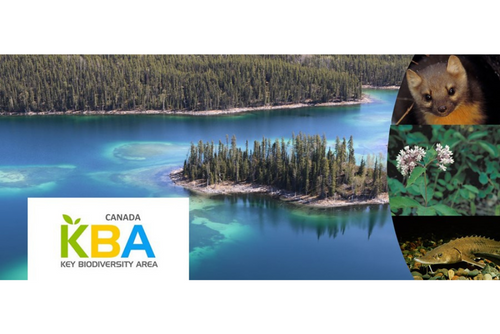Dozens of Potential new Key Biodiversity Areas in Yukon
The Canadian Key Biodiversity Areas initiative recently held a first regional workshop in Yukon Territory on November 5 and 6. Several months of data mining, interpretation of data, and planning for the assessment of species and sites was led by Yukon scientist Maria Leung. The workshop brought together scientists and planners from both the Federal and Territorial governments, from several First Nations, and from conservation organizations. During the workshop, 26 potential new KBAs were identified (with preliminary delineation completed), most under Criterion B1, which captures geographically restricted biodiversity. Endemic plants and invertebrates triggered the majority of KBAs, along with a few endemic fish populations and several sites where caribou aggregate in huge numbers. The workshop represented the first attempt to identify KBAs across a large region in Canada. Testing out the methodology and gaining experience in applying the quantitative KBA Standard and criteria is an important step for the Canadian KBA initiative and we will be repeating the process in other provinces over the coming months. Coordinators have recently started planning work in Atlantic Canada and Quebec, and a pilot initiative to test the methods and identify a first Key Biodiversity Area has been completed in BC.
A few additional updates:
- NatureServe Canada is making quick progress on data mining for Key Biodiversity Area species and ecosystems, as well as on the development of a spatial database that will be used to develop range maps for KBA species and feed into KBA assessments. See here for more information on NatureServe Canada’s range mapping work.
- Dr. Juan Zuloaga, a post-doctoral researcher at McGill University working on Key Biodiversity Areas methodology and modeling in the lab of Dr. Andy Gonzalez, has been hard at work since early September developing streamlined approaches for making use of the biodiversity data that we are accumulating under the leadership of NatureServe Canada and KBA Canada’s lead data analyst Chloé Debyser.
- We have given a series of webinars on the Canadian KBA initiative this fall at the invitation of different organizations and government departments, including WCS Canada, CPAWS, Nature Conservancy of Canada, the Canadian Species At Risk Advisory Committee, ECCC’s Priority Places initiative and several Foundations. We have also presented the initiative at conferences and meetings, including the Canadian Parks Conference and the Kootenay Conservation Program Fall gathering. Upcoming presentations include to the Canadian Wildlife Directors Committee and COSEWIC.
- Bird Studies Canada is about to embark on an assessment of Canadian Important Bird Areas (IBAs) under the new Key Biodiversity Areas criteria, and has recently hired an analyst to lead this work. All KBAs will eventually find a home on a national database that is being developed by Bird Studies Canada.
- In case you missed it, here is a link to an article in Canadian Geographic about Key Biodiversity Areas.
As always, please get in touch if you have questions or if you are interested in identifying Key Biodiversity Areas in your region.
Ciara Raudsepp-Hearne
Canada Key Biodiversity Areas Coordinator / Coordonnatrice Zones Clés pour la Biodiversité
